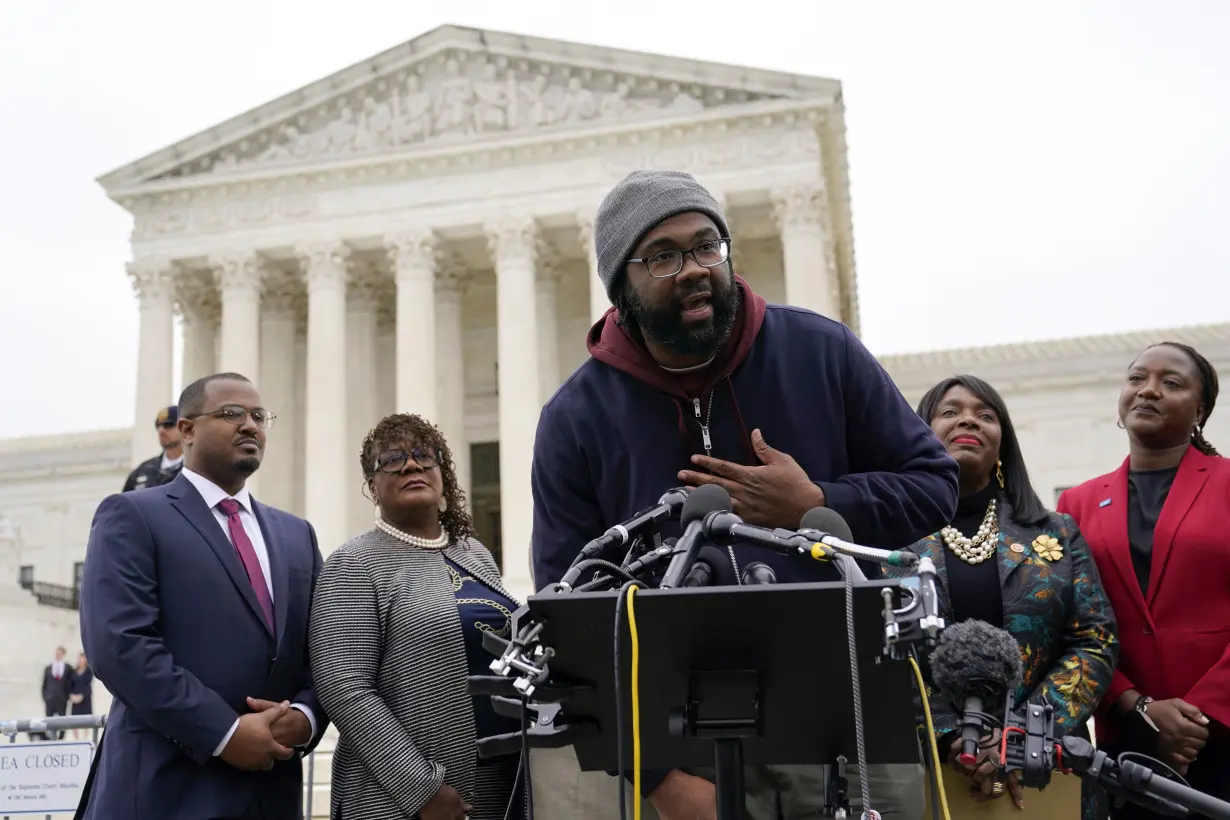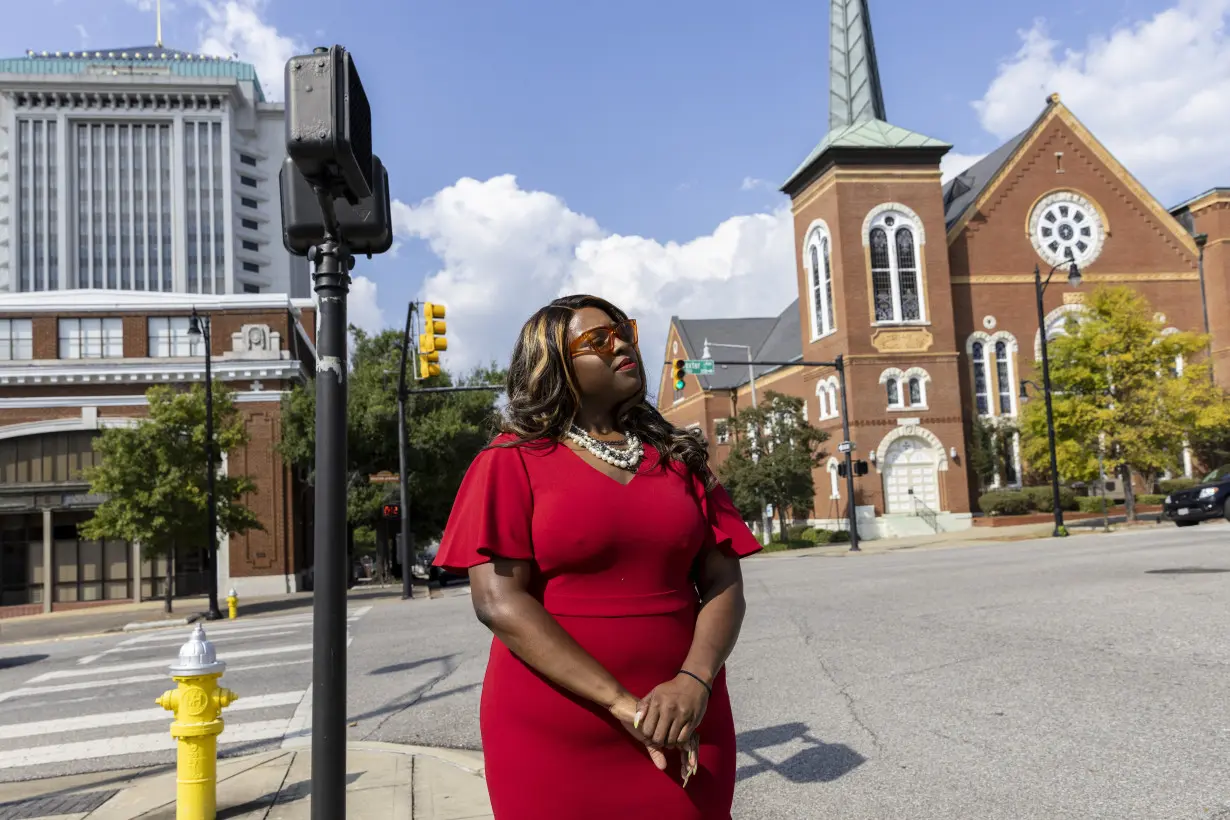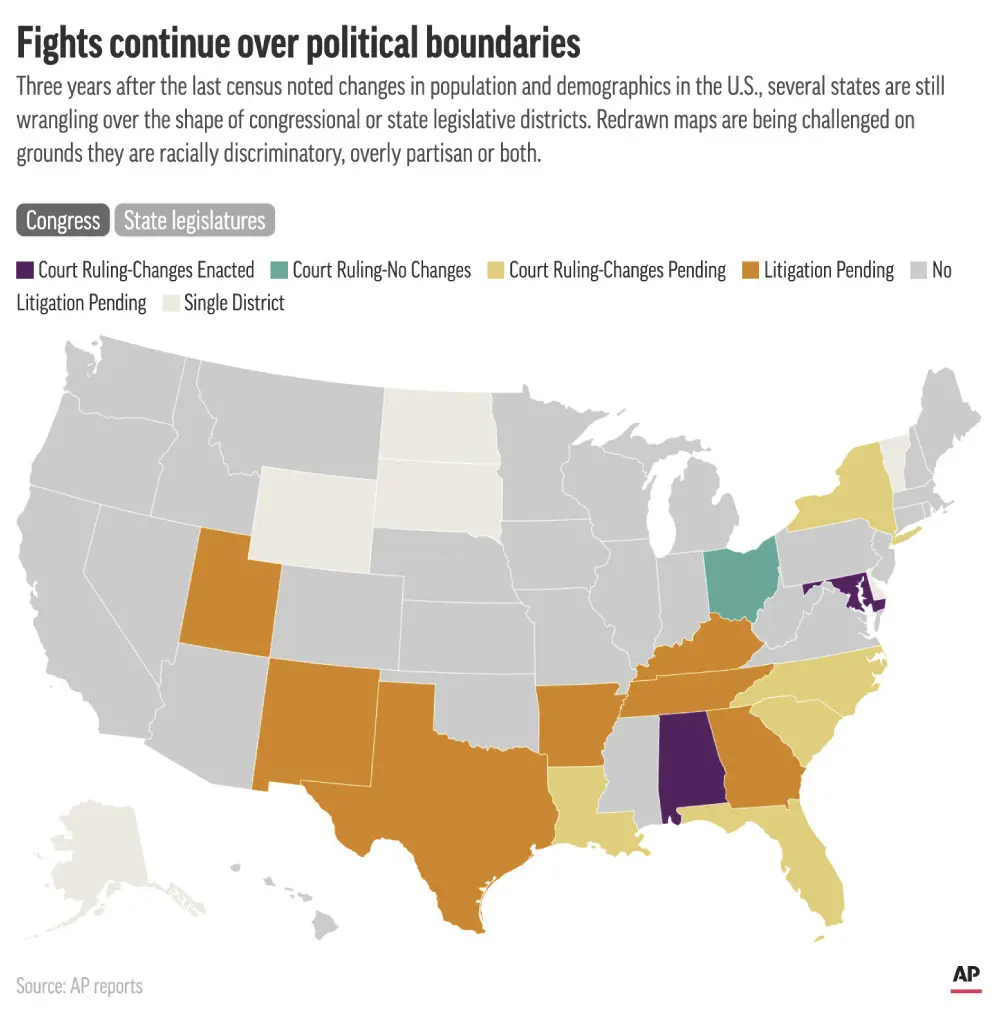MONTGOMERY, Ala. (AP) — Federal judges on Thursday selected new congressional lines for Alabama to give the Deep South state a second district where Black voters comprise a substantial portion of the electorate.
The new map sets the stage for potentially flipping one U.S. House of Representatives seat from Republican to Democratic control and could lead to the election of two Black Congressional representatives to the state's delegation for the first time. The judges stepped in to pick a new congressional map after ruling that Alabama illegally diluted the voting power of Black residents, and that the Republican-controlled Alabama Legislature failed to fix the Voting Rights Act violation when they adopted new lines this summer.
“It’s a historic day for Alabama. It will be the first time in which Black voters will have an opportunity to elect candidates of their choice in two congressional districts,” said Deuel Ross, an attorney with the NAACP Legal Defense Fund who represented plaintiffs in the case.
Black voters in 2021 filed a lawsuit challenging the state’s existing plan as an illegal racial gerrymander. The U.S. Supreme Court in June upheld the three-judge panel’s finding that Alabama’s prior map — with one majority-Black district out of seven in a state that is 27% Black — likely violated the federal Voting Rights Act. The three-judge panel said the state should have two districts where Black voters are the majority or close to it.

The panel selected one of three plans proposed by a court-appointed expert that alters the bounds of Congressional District 2, now represented by Republican Rep. Barry Moore, who is white. The southeast Alabama district will stretch westward across the state to the Mississippi border. Black residents will go from comprising less than one-third of the district's voting-age population to 48.7%.
“We’re glad to see that process result in a federal court selecting a map that allows all, all the people of Alabama to have their voices heard,” White House press secretary Karine Jean-Pierre said Thursday.
The decision was a loss for Alabama Republicans, who were reluctant to create a Democratic-leaning district, and approved a map with a 39.9% Black voting age population in Congressional District 2. The three-judge panel said last month that they were “deeply troubled” that Alabama lawmakers flouted their instruction, and plaintiffs made unflattering comparisons to segregationist Gov. George Wallace’s efforts in 1963 to fight court desegregation orders.

The judges adopted the new lines after issuing a preliminary injunction that blocked use of the latest state-drawn plan. The judges said the new map must be used in upcoming elections, noting Alabama residents in 2022 voted under a map they had ruled illegal after the Supreme Court put their order on hold to hear the state’s appeal.
Alabama Attorney General Steve Marshall said while the map will be used in 2024, the state will continue the legal fight to restore the state-drawn lines for future elections. The case is expected to go to trial before the same three-judge panel next year. Alabama has argued that the three-judge panel. which includes two Trump appointees, is seeking changes that go beyond what the June Supreme Court decision required.
Marshall criticized the court-adopted map for connecting cities on opposite ends of the state.

“The Voting Rights Act was enacted to undo gerrymanders, not create them ... Anyone who looks at the state's map next to the map now imposed on the state can tell which is the racial gerrymander,” Marshall said in a statement.
Plaintiffs in the case on Thursday called the decision an "unequivocal win that will translate to increased opportunities for those who have too long been denied the fair representation they deserve."
Evan Milligan, the lead plaintiff in the case, said many Black voters in the area had grown accustomed to being ignored. He said the new map should remedy that. “It’s the beginning of another chapter,” Milligan said.
It is Alabama’s first significant revamp of its congressional districts since 1992, when Alabama was ordered by the courts to create a majority-Black district, Congressional District 7, now represented by Rep. Terri Sewell, a Black Democrat.
The new map could pit two current Republican congressmen against each other in 2024, and also draw a crowded field vying for the revamped District 2. Moore’s home is now in District 1, currently represented by Republican Rep. Jerry Carl. Moore said Thursday that he is “prayerfully” weighing what to do in 2024.
The court-ordered lines in Alabama come as redistricting cases are pending in Louisiana, Georgia and elsewhere.
Former U.S. Attorney General Eric Holder, chairman of the National Democratic Redistricting Committee, said other states should view the Alabama decision as an example of “basic fairness” and a “warning that denying equal representation to Black voters, violating the Voting Rights Act, and defying federal court orders is a direct tie to an odious past and will no longer be tolerated.”

 UK inflation unexpectedly eases in December, which could reduce pressure in bond markets
UK inflation unexpectedly eases in December, which could reduce pressure in bond markets
 Body count from South African mine siege rises to 60
Body count from South African mine siege rises to 60
 US importers rush in goods from China as Trump tariff threat looms
US importers rush in goods from China as Trump tariff threat looms
 Novak Djokovic breaks a tie with Roger Federer for the most Grand Slam matches in tennis history
Novak Djokovic breaks a tie with Roger Federer for the most Grand Slam matches in tennis history
 China's RedNote: what you need to know about the app TikTok users are flocking to
China's RedNote: what you need to know about the app TikTok users are flocking to
 British author Neil Gaiman denies ever engaging in non-consensual sex as more accusers come forward
British author Neil Gaiman denies ever engaging in non-consensual sex as more accusers come forward








